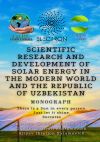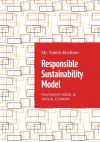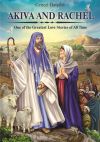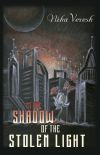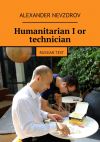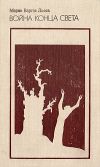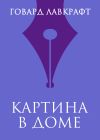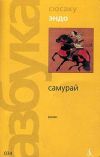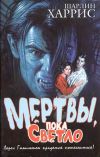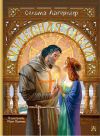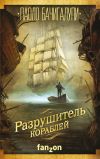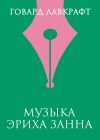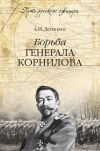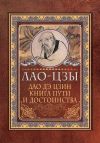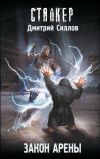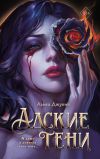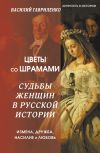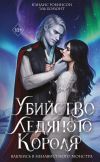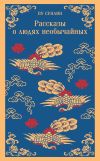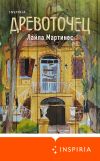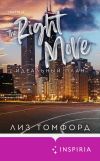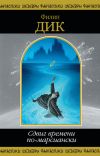Текст книги "Английский язык"

Автор книги: Светлана Дмитриева
Жанр: Учебная литература, Детские книги
сообщить о неприемлемом содержимом
Текущая страница: 1 (всего у книги 4 страниц) [доступный отрывок для чтения: 1 страниц]
Дмитриева С. Ю., Патеева Э. М.
Английский язык
Предисловие
Данное пособие предназначено для занятий со студентами инженерных факультетов сельскохозяйственных вузов. Целью пособия является формирование у студентов навыков работы с профессионально-ориентированными текстами, расширение терминологического словаря и развитие умений и навыков общения в рамках своей будущей профессии.
Источником послужили как оригинальная литература, так и учебные тексты российских авторов. Тематика выбранных текстов охватывает сферы науки, техники, страноведения и сельского хозяйства. Не являясь базовым учебником для студентов младших курсов инженерного факультета, пособие может стать удачным дополнением к основному курсу, разнообразить языковое общение преподавателя и студентов на занятиях по английскому языку.
Пособие состоит из трех основных циклов, выделенных по тематическому признаку и одного дополнительного цикла. В конце сборника дан словарь основных технических терминов.
Тексты каждого цикла даны в логической последовательности: от общего представления отрасли до конкретных машин и оборудования. Материалы последнего цикла нацеливают на общение и носят выраженную коммуникативную направленность.
UNIT I
ENGINEERING

Text 1
Engineering Thinking
Engineering is putting knowledge of Nature to practical use. The final product of engineering is some physical thing: a machine, a tool, a garget. Engineering is solving problems. It is convenient to discuss engineering projects within the framework of five steps for solving problems
• Will you restore the logical order of these steps?
A good engineer first … second … next … then … and last …
a) defines the problem; b) verifies the solution; c) identifies possible solutions; d) implements the solution; e) selects a solution..
• Can you prove the following ideas? Will you say a few words in favour of each?
– It is important for an engineer to have a creative mind and to generate new ideas.
– It is obligatory to consult the scientific literature available on the problem under study.
– It is not recommended to trust the intuition.
– It is desirable for an engineer to enjoy the whole life cycle of the product designed by him.
– It is useful to have a feedback between an engineer and a customer.
Wordlist
engineering – инженерное дело, техника
final product – конечный продукт
tool – инструмент
to solve a problem – решить проблему
framework – основа
creative mind – творческий ум
obligatory – обязательные
desirable – желательный, заданный
feedback – обратная связь
Answer the questions.
1. What is engineering?
2. What is the final product?
3. Is it important to consult scientific literature?
4. Do you trust your intuition?
Text 2
Machines
In his activities man makes use of a multitude of machines. Although most of them are of quite recent origin, a few simple ones are considered to have come from very ancient times. There were a lot of prehistoric implements, the bow and the arrow being the most ancient. They were his tools in his struggle for existence.
The wheel, one of the greatest inventions ever made by man is also of prehistoric origin. The inclined plane and its use have also been known. It was doubtless by its use that Egyptian slaves lifted the huge stones that went into the construction of the great pyramids.
The lever is probably of equally ancient origin. It is mentioned by the Greek Philosopher Aristotle as a means of lifting a great weight by using a very small force.
Tremendous changes in machine development were made in the 20th century. Now we use not only powerful devices, precise instruments, but also ―clever machines.‖
Wordlist
activity – деятельность
multitude – множество, огромное количество
bow and arrow – лук и стрела
to be of recent origin – быть недавнего происхождения
implement – орудие, приспособление
wheel – колесо
inclined plane – наклонная плоскость
slave – раб lever – рычаг
powerful device – мощное устройство
Answer the questions.
1. What implements have come from ancient times?
2. What role did the inclined plane play?
3. What can you say about machine development in the 20th century?
4. What "clever machines" do you know?
5. What were these machines used for?

Text 3
The internal combustion engine
The internal combustion engine is an engine in which the combustion of a fuel (normally a fossil fuel) occurs with an oxidizer (usually air) in a combustion chamber that is an integral part of the working fluid flow circuit. In an internal combustion engine (ICE) the expansion of the high-temperature and high-pressure gases produced by combustion apply direct force to some component of the engine. The force is applied typically to pistons, turbine blades, or a nozzle. This force moves the component over a distance, transforming chemical energy into useful mechanical energy. The first commercially successful internal combustion engine was created by Étienne Lenoir

The cycle is characterized by four strokes, or straight movements alternately, back and forth, of a piston inside a cylinder:
1. intake (induction) stroke
2. compression stroke
3. power (combustion) stroke
4. exhaust stroke
1) The cycle begins at top dead center, when the piston is at its uppermost point. On the first downward stroke (intake) of the piston, a mixture of fuel and air is drawn into the cylinder through the intake (inlet) port.
2) The intake (inlet) valve (or valves) then close(s), and the following upward stroke (compression) compresses the fuel-air mixture.
3) The air-fuel mixture is then ignited, usually by a spark plug for a gasoline or by the heat and pressure of compression for a Diesel cycle of compression ignition engine, at approximately the top of the compression stroke.
4) The resulting expansion of burning gases then forces the piston downward for the third stroke (power), and the fourth and final upward stroke (exhaust) evacuates the spent exhaust gases from the cylinder past the then-open exhaust valve or valves, through the exhaust port.
Wordlist
internal combustion engine – двигатель внутреннего сгорания
fuel – топливо
to occur – происходить
chamber – камера
piston – поршень
nozzle – форсунка, наконечник, выпускное отверстие
stroke – ход, такт
intake – всасывание compression – сжатие
to ignite – воспламенять(ся) зажигать
spark plug – запальная свеча
approximately – приблизительно
downward (upward) – движение вниз (вверх)
exhaust gases – отработанные (выхлопные) газы
valve – клапан
spring – пружина
Answer the questions.
1. What is internal combustion engine?
2. What process produces force in the engine?
3. Who created the first ICE?
4. What are the main strokes in the ICE?
5. Can you describe them?
Text 4
The Wheel
One of mankind s earliest and greatest inventions was the wheel. Without it there could be no industry, little transportation or communications, only crude farming, no electric power. Nobody knows when the wheel was invented. There is no trace of the wheel during the Stone Age, and it was not known to the American Indians until the White Man came. In the Old World it came into use during the Bronze Age, when horses and oxen were used as work animals.
At first all wheels were solid discs. The problem to be solved was to make the wheels lighter and at the same time keep them strong. At first holes were made in the wheels, and they became some with iron and then with rubber.
Wordlist
mankind – человечество
trace – след
to come into use – найти свое применение
Bronze Age – Бронзовый Век
solid – прочный, твердый
hole – отверстие

Answer the questions.
1. What was one of the greatest world's inventions?
2. When was the wheel invented?
3. What was the problem to be solved with the wheels?
4. What was the wheel covered with?
Scientists and Inventors
Text 5
Isaac Newton
Isaac Newton is generally regarded as one of the greatest and most famous scientists in history. Newton was an astronomer, physicist, mathematic and philosopher who is known for theorizing and reporting on gravitational force and three laws of motion.
Isaac Newton discovered that white light is made up of a spectrum of colours, that when blender together produce the white light. He showed by use of a prism that white light can be split into a spectrum of colours and then used a second prism to show this spectrum can then be rejoined to produce white light. Newton also theorized that light was composed of particles but had to associate the property of light with waves in order to explain refraction of light.
Wordlist
to be regarded – считаться, быть известным как…
gravitational force – сила гравитации
colour – цвет
light – свет
property – свойство
wave – волна
Answer the questions:
1. What were the spheres of Isaac Newton's interests?
2. How is white light produced?
3. What was his theory about light waves?
Text 6
Ernest Rutherford (1871-1937)
Ernest Rutherford is called the Newton of atomic physics. He was recognized by his fellow scientists as a man of colossal energy and tireless enthusiasm.
Ernest Rutherford was born in New Zealand. He graduated from New Zealand University and entered Trinity College, Cambridge. In 1919 he was appointed a Professor of experimental physics in the University of Cambridge. E. Rutherford’s early researches concerned electromagnetic waves.
His experiments led him to develop a magnetic detector, which at that time was the best detector of electromagnetic waves. His detector was later used by Marconi, one of the inventors of the radio, in his wellknown investigations. Rutherford’s big triumph began when he turned his attention to radioactivity. His brilliant researches established the existence and nature of radioactive transformations. He also investigated the electrical structure of matter and the nuclear nature of atom. He was one of the founders of the atomic theory of physics and creators of the first atomic model. He stated that the atom consisted of a nucleus around which electrons revolved in orbits.
Wordlist:
recognize – признавать, узнавать
tireless – неустанный
graduate – получать высшее образование
research – исследование
concern – интерес, касаться, интересоваться
detector – детектор, датчик
establish – устанавливать, основывать
matter – вещество, материя
creator – создатель, творец
consist – состоит revolve – вращать, вращаться
Answer the questions:
1. When was Ernest Rutherford born?
2. What was Rutherford’s research concerned with?
3. When did Rutherford’s big triumph begin?
Text 7
Alessandro Volta(1745-1827)
Alessandro Volta was Italian physicist known for the invention of the battery in the 1800s. Volta was born in Como and educated in the public schools there. In 1774 he became professor of physics at the
Royal School in Como, and in the following year he devised the electrophorus, an instrument that produced charges of static electricity. In 1776-77 he applied himself to chemistry, studying atmospheric electricity and conducting experiments such as the ignition of gases by an electric spark in a closed vessel. In 1779 he became professor of physics at the University of Pavia, a chair he occupied for 25 years. By 1800 he had developed the so-called voltaic pile, a forerunner of the electric battery, which produced a steady stream of electricity.
Wordlist
physicist – физик
charge – разряд
ignition – зажигание, воспламенение
voltaic pile – вольтов столб
Answer the questions:
1. What is electrophorus?
2. What experiments in the field of chemistry did he conduct?
3. When did he develop voltaic pile?
4. What did the voltaic pile produce?
Text 8
Rudolf Diesel (1858-1913)
Rudolf Diesel was born in Paris, France in 1858. He was a German inventor and mechanical engineer, famous for the invention of the Diesel engine.
Diesel developed a theory that revolutionized the concept of the combustion engine. He envisioned an engine in which air is compressed to such a degree that there is an extreme rise in temperature. When fuel is injected into the piston chamber with this air, the fuel is ignited by the high temperature of the air, exploding it, forcing the piston down. Diesel soon received a patent for his design and began building experimental models of his engine. The first working model ran in 1893 with 26 % efficiency, more than double the efficiency of the steam engine. In 1897 the first diesel engine suitable for practical use operated at a remarkable efficiency of 75 %.
Wordlist
concept – концепция, понятие
to be injected – впрыскиваться
to receive a patent – получить патент
to envision – представлять себе
suitable for practical use – пригодный для практического применения
Answer the questions:
1. When was Rudolf Diesel born?
2. How did he envision an engine?
3. What did he receive a patent for?
4. When did the first engine suitable for practical use appear?
Text 9
Nicola Tesla (1856-1943)
Nicola Tesla was a Serbian-American inventor, electrical engineer, mechanical engineer. physicist. American inventor Nicola Tesla patented an electricity-generating and distribution system that transmitted alternating current (AC). He developed and applied many other important ideas in the fields of electricity and radio.
The Tesla coil, an induction coil he invented, is used in radio technology and operates at every high frequencies.
Tesla worked briefly for the American inventor Thomas Edison (18471931), but they fell out because they disagreed about the best form of electric current to use for large-scale supply.
In the end, Tesla's alternating current system was favored over Edison's direct current (DC) system.
Wordlist
alternating current – переменный ток
current – ток coil – катушка
high frequencies – высокие частоты
to fall out – распадаться
Answer the questions:
1. Where is Nicola Tesla from?
2. What sphere did he work in?
3. What did he develop?
4. Whom did he work with? What was their disagreement?
Text 10
Alfred Bernard Nobel (1833-1896)
Alfred Bernard Nobel was Swedish inventor and philanthropist. He was a son of a bankrupt, but became a millionaire; a scientist with a love of literature. He made a large fortune but lived a simple life. He was cheerful in company, and often sad in private.
A lover of mankind, he never had a wife or family to love him, a patriotic son of his native land, he died alone on foreign soil.
He discovered a new explosive, dynamite, to improve the peacetime industries of mining and road building, but saw it used as a weapon of war.
He was born in Stockholm on October 21, 1833 but moved to Russia with his parents in 1842, where his father made a strong position in engineering industry. He made a lot of money for his invention of landmine, but later went bankrupt. Alfred came to Sweden in 1863, and started his own study of explosives in his fathers laboratory.
He had never been to school or University but he studied privately and by the time he was twenty he became a skillful chemist and excellent linguist, speaking Swedish, Russian, German, French and English. Like his father, Alfred Nobel was imaginative and inventive, but he had better luck in business and showed more financial sense.
He was quick to see industrial openings for his scientific inventions and built up over 80 companies in 20 different countries. Indeed greatness lay in his outstanding ability those of a forward-looking industrialist.
But Nobel?s main concern was never with making money or even making scientific discoveries. He was always searching for a meaning to life, and from his youth he had taken a serious interest in literature and philosophy. Perhaps, because he could not find ordinary human love– he never married– he came to care deeply about the whole of mankind. He was always generous to the poor. His greatest wish, however, was to see an and to wars and he spent much time and money working for this cause until his death in Italy in 1896.
His famous will, in which he left to provide prizes for outstanding works in physics, chemistry, psychology, medicine, literature and peace, is a memorial to his interests and ideals. And so, the man who felt he should have died at birth is remembered and respected long after his death.
Wordlist
bankrupt– банкрот
cheerful– весёлый, радостный
explosive– взрывчатое вещество
weapon– оружие
peacetime– мирное время
landmine– мина
imaginative– образный
to show– показывать
quick– быстрый, быстро
to provide– обеспечивать
to respect– уважать
Answer the questions
1. Who was Alfred Bernhard Nobel?
2. When was Alfred Bernhard Nobel born?
3. What was discovered by him?
Text 11
The History of Computer Development
The rapidly advancing field of electronics led to construction of the first general-purpose electronic computer in 1946 at the University of Pennsylvania. It was Electronic Numerical Integrator And Computer or ENIAC, the device contained 18,000 vacuum tubes and had a speed of several hundred multiplications per minute. Its program was wired into the processor and had to be manually altered.
Later transistors appeared. The use of the transistor in computers began in the late 1950s. It marked the advent of smaller, faster elements than it was possible to create with the use of vacuum-tube machines. Because transistors use less power and have a much longer life, computers alone were improved a lot. They were called secondgeneration computers.
Components became smaller and the system became less expensive to build.
Modern digital computers are all conceptually similar, regardless of size and shape. Nevertheless, they can be divided into several categories on the basis of cost and performance.
The first one is the personal computer or microcomputer, a relatively low-cost machine, usually of desk-top size. Sometimes they are called laptops. They are small enough to fit in a briefcase. The second is the workstation, a microcomputer with enhanced graphics and communications capabilities that make it especially useful for office work. And the server computers, a large expensive machine with the capability of serving the needs of major business enterprises, government departments, scientific research establishments. The largest and fastest of these are called supercomputers.
A digital computer is not actually a single machine, in the sense that most people think of computers. Instead it is a system composed of five distinct elements: a central processing unit, input devices, memory storage devices, output devices and a communications network, called a «bus» that links all the elements of the system and connects the system itself to the external world.
Talking about a central processing unit or the heart of computer; I would like to add that there were several generations of microprocessors. The first generation was represented by processing unit Intel 8086. The second generation central processing unit was represented by processing unit Intel 80286, used in IBM PC AT 286. In the end of 80s such computer costs about 25-30 000 rubles in the former USSR. The third generation is represented by Intel 80386, used in IBM PC AT 386. The microprocessors of the fourth generation were used in computers IBM PC AT 486. There are also central processing units of the fifth generation, used in Intel Pentium 60 and Intel Pentium 66, central processing units of the sixth generation, used in computers Intel Pentium 75,90,100 and 133. Few years ago appeared central processing units of seventh and eighth generations.
Computer speeds are measured in gigahertz today. Recently, an optical central processing unit has been invented, which is capable of executing trillions discrete operations per second or it is as fast as the speed of light.
So, we are at the threshold of new computer era, when artificial intelligence could be invented. There are no questions with «if», the only question is «when». And time will show us either computers become our best friends or our evil enemies as it is shown in some movies.
Wordlist
multiplication – действие, операция
manually – в ручную
second-generation computers – компьютеры второго поколения
expensive – дорогостоящий
digital – цифровой
central processing unit – центральный процессор
input devices – устройства ввода памяти
memory storage devices – запоминающие устройства
Answer the questions:
1. When was the first general-purpose electronic computer constructed?
2. Where was the first general-purpose electronic computer constructed?
3. What was the result of transistors appearance?
4. What categories are digital computers are classified into?
5. What are five distinct elements of a digital computer?
6. What can you say about central processing unit (input devices, memory storage devices, output devices and a communications network)?
7. How are computers speeds measured?
Внимание! Это не конец книги.
Если начало книги вам понравилось, то полную версию можно приобрести у нашего партнёра - распространителя легального контента. Поддержите автора!Правообладателям!
Данное произведение размещено по согласованию с ООО "ЛитРес" (20% исходного текста). Если размещение книги нарушает чьи-либо права, то сообщите об этом.Читателям!
Оплатили, но не знаете что делать дальше?